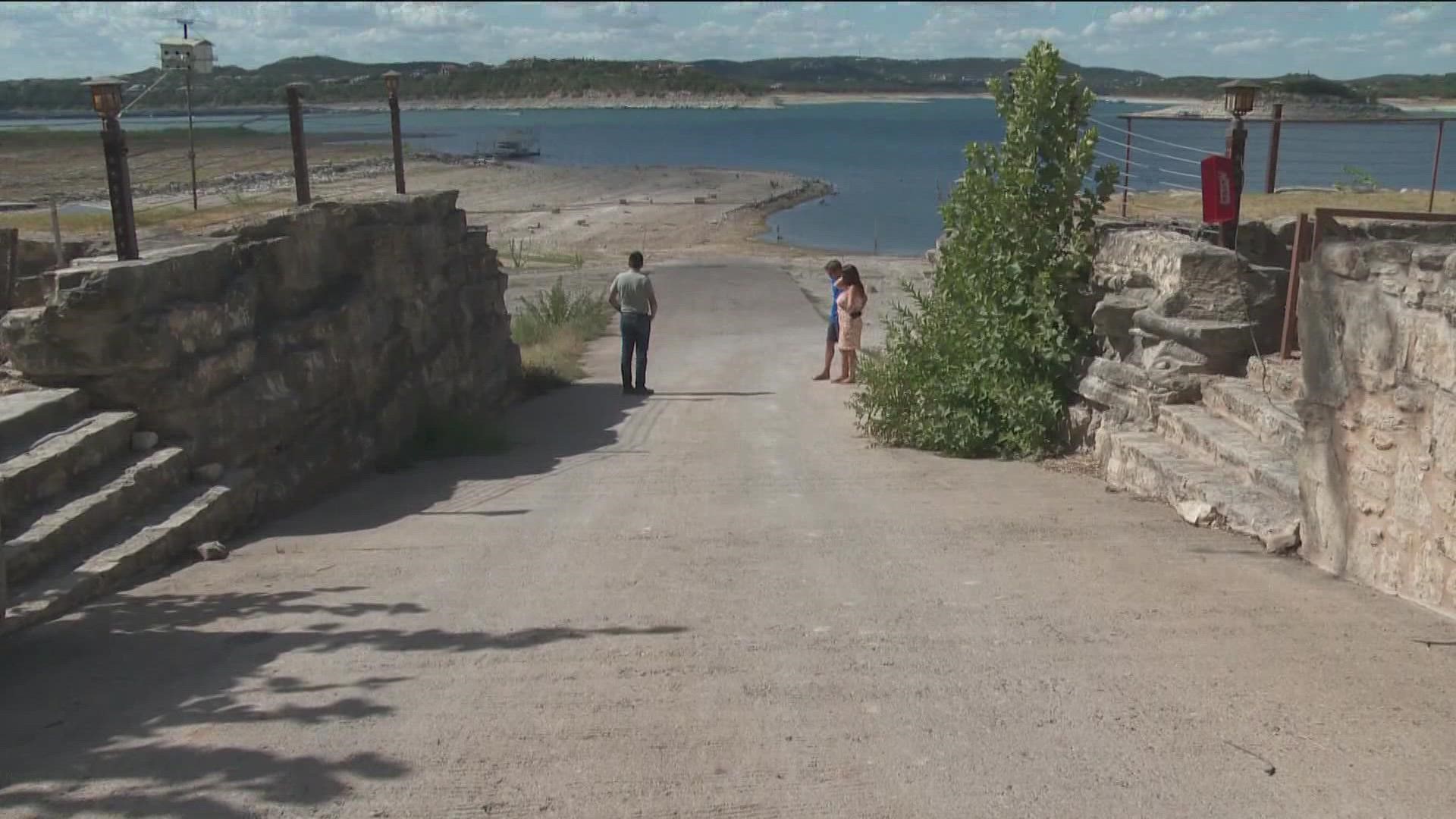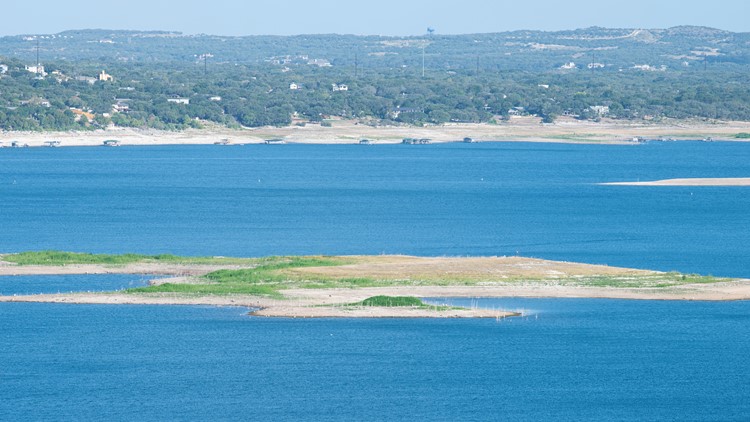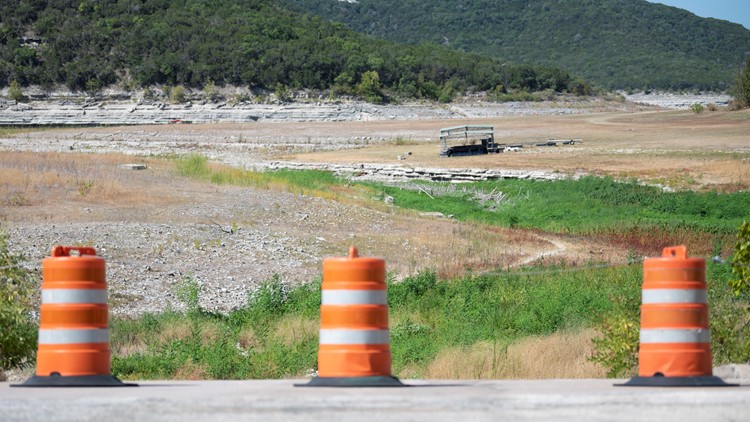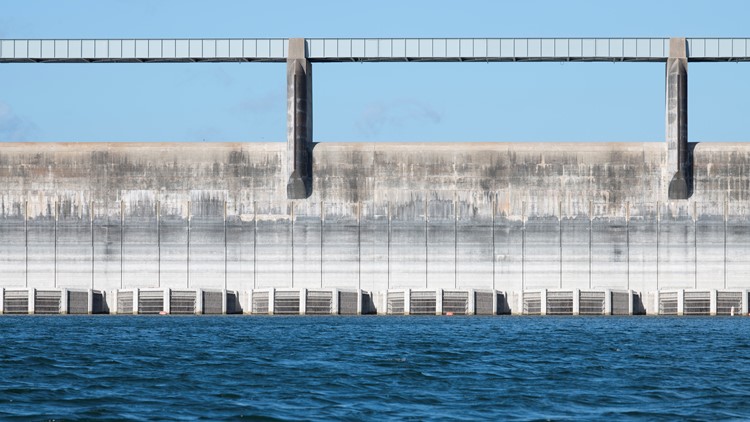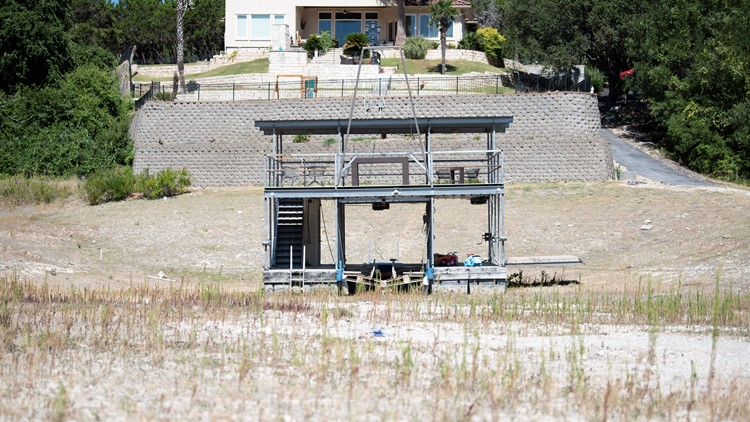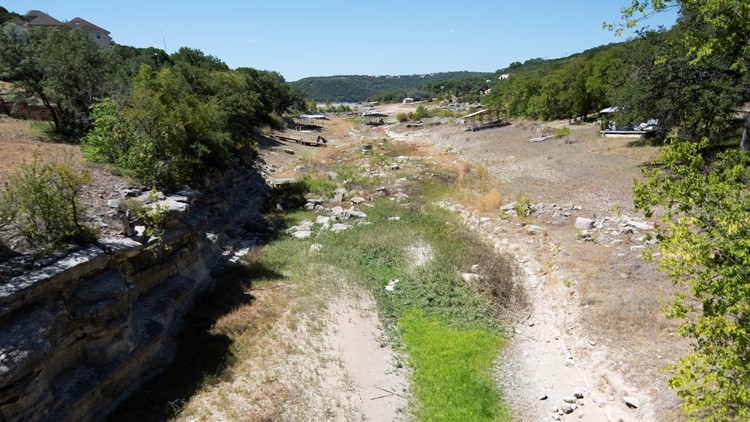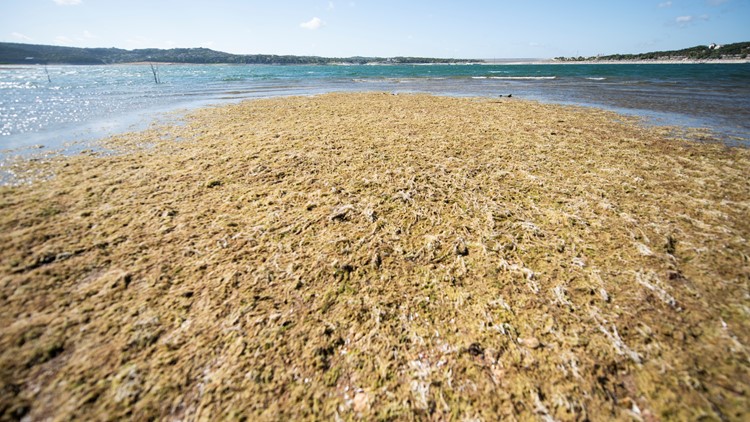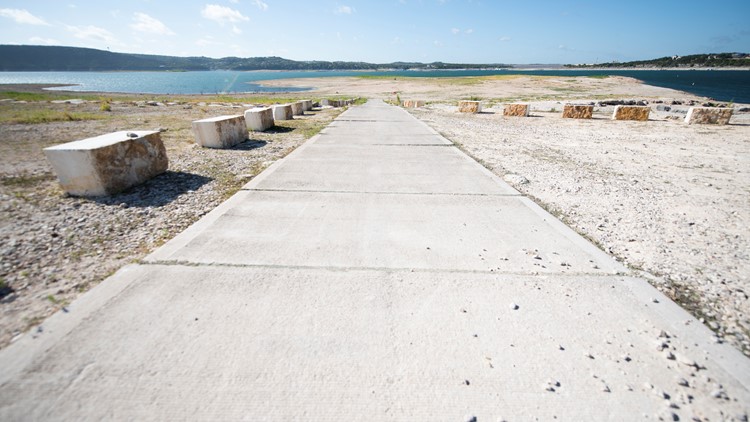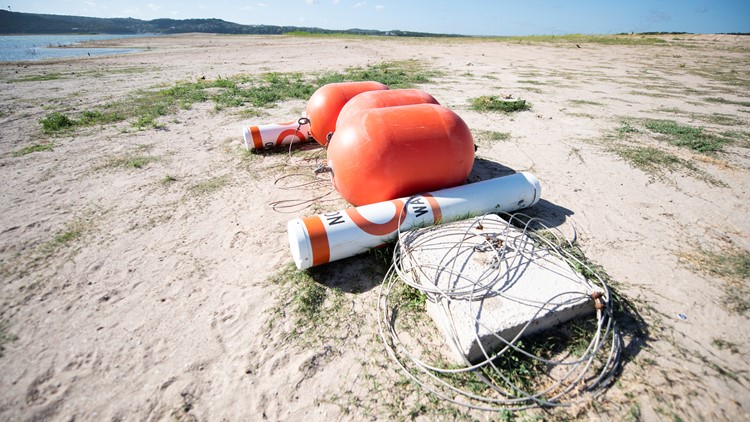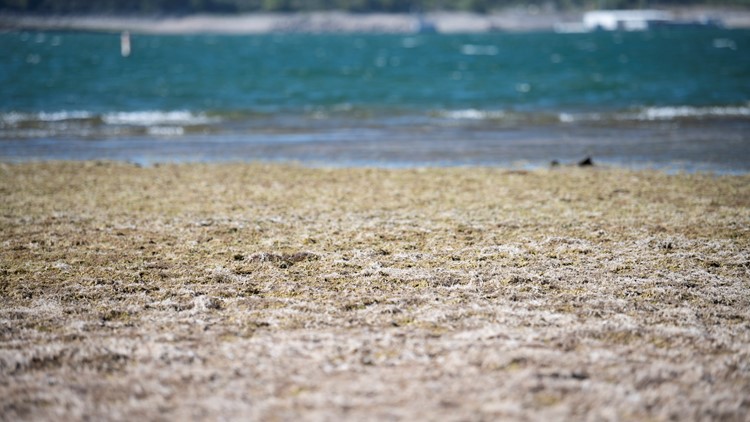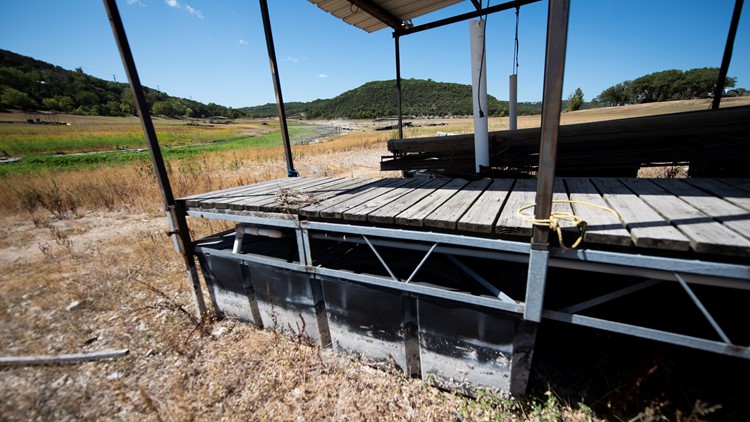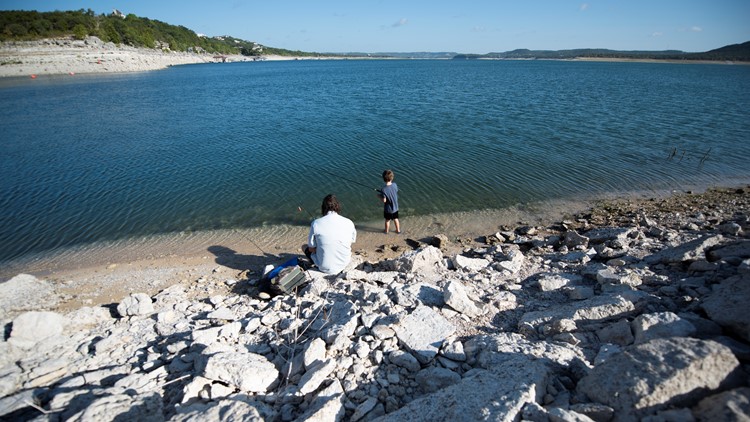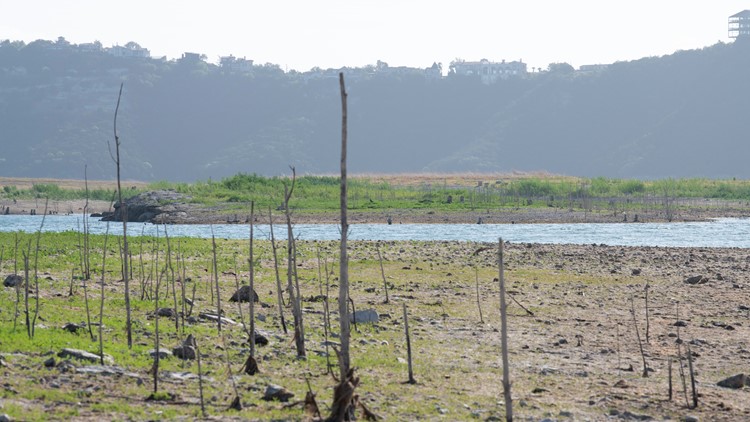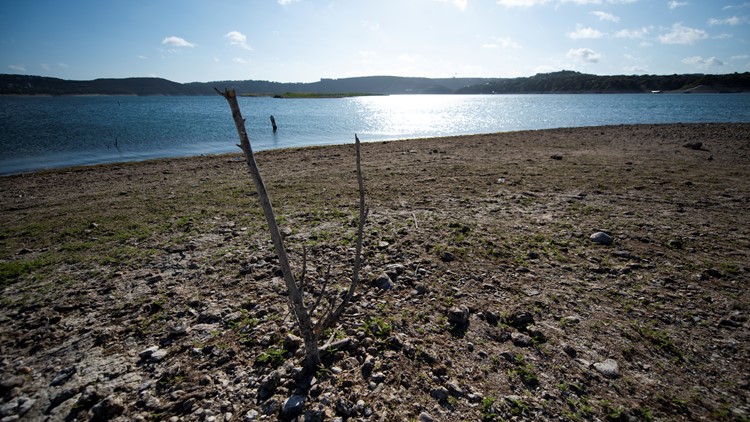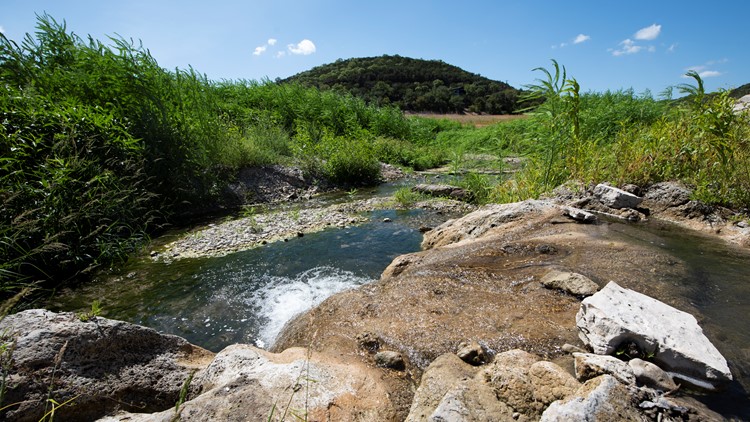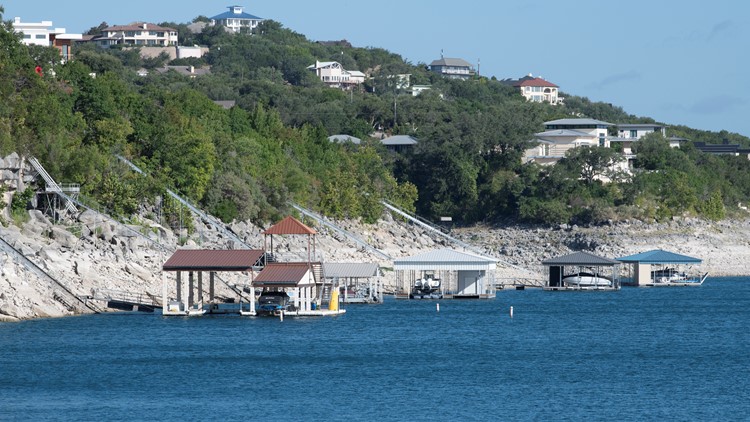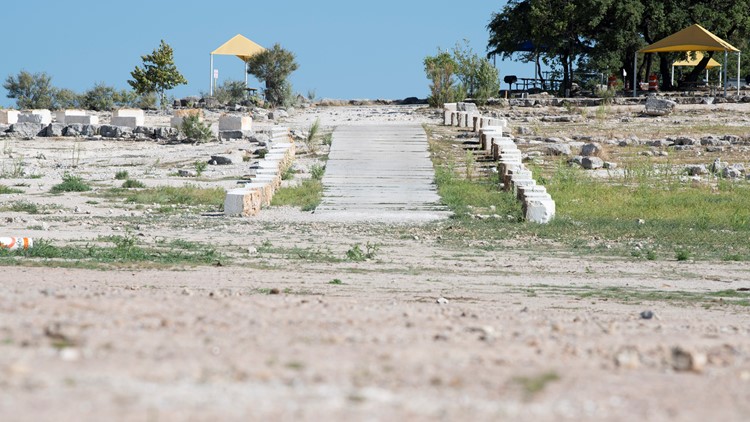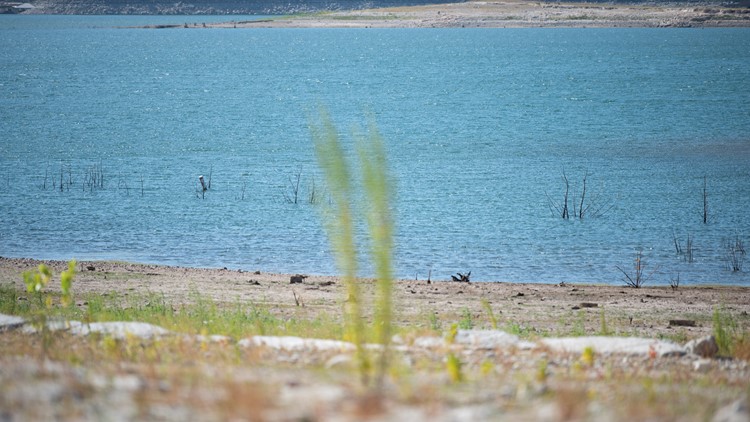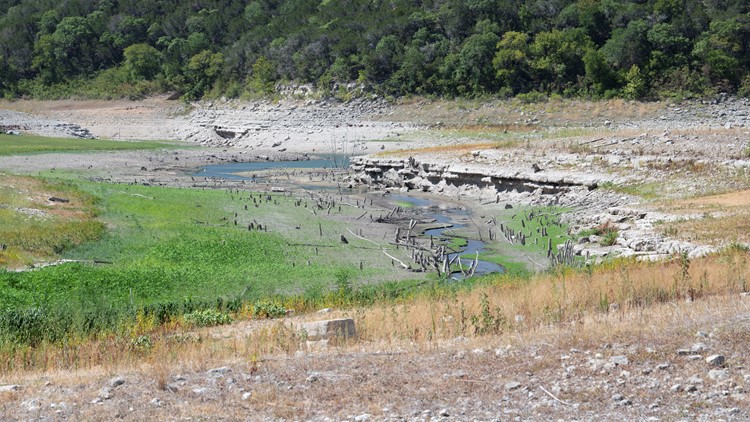AUSTIN, Texas — July 2022 is now the hottest on record for Austin.
Lake Travis water levels continue to drop. The lake is now at 53% of its full capacity – 192.39 billion gallons of water, approximately.
"A little bit above my hand is the fullness of Lake Travis. So on this wall, the top of this wall is 681 [feet mean sea level, or feet MSL)], which is the full level, which it's never really at that point. It kind of fluctuates," Austin Edwards said as he pointed to a stone wall between his business, Austin's Boat Tours, and Lake Travis.
Edwards and his wife, Angel, have owned the business together since 2015. They've worked on the lake since 2010.
Lake Travis is full at 681 feet MSL. According to the Lower Colorado River Authority (LCRA), the lake water currently sits at 646.7 feet MSL. LCRA projects the water will drop by nearly another foot within the next week.
"It's really unsafe conditions for people that don't know this lake," Edwards said. "We have accidents, you know, hitting sandbars … I see a lot of private boaters that do that, and that's a big hazard."
PHOTOS: Drought causes low water levels on Lake Travis
Ken Thomas has been boating on Lake Travis for 25 years. This summer, he's put his boat in the water nearly every week at the Mansfield Dam Park boat ramp.
"I'm kind of familiar with it and I'm not really going up a bit too much, so I'm just staying in the deeper part over here," Thomas points out into the center of the lake near the dam.
The couple operates their business close to the original river bed that was there before the dam was erected decades ago. It's one of the deepest parts of the 65-mile lake.
"This lake was meant to do this," Angel said. "It was meant to be a reservoir that fills and lowers, you know, because it's meant for drinking water, for just, you know, supply water to all these communities around us. We're continually developing new homes and businesses, which are pulling even more water out of Lake Travis."
The business owners hope rain may soon be around the corner, but add hurricane season is when they see the greatest rise in water levels.
"It really does replenish this," Edwards said. "I mean, I've seen this lake come up 26 feet in 24 hours before, and that was the flood of 2018."
PEOPLE ARE ALSO READING:

